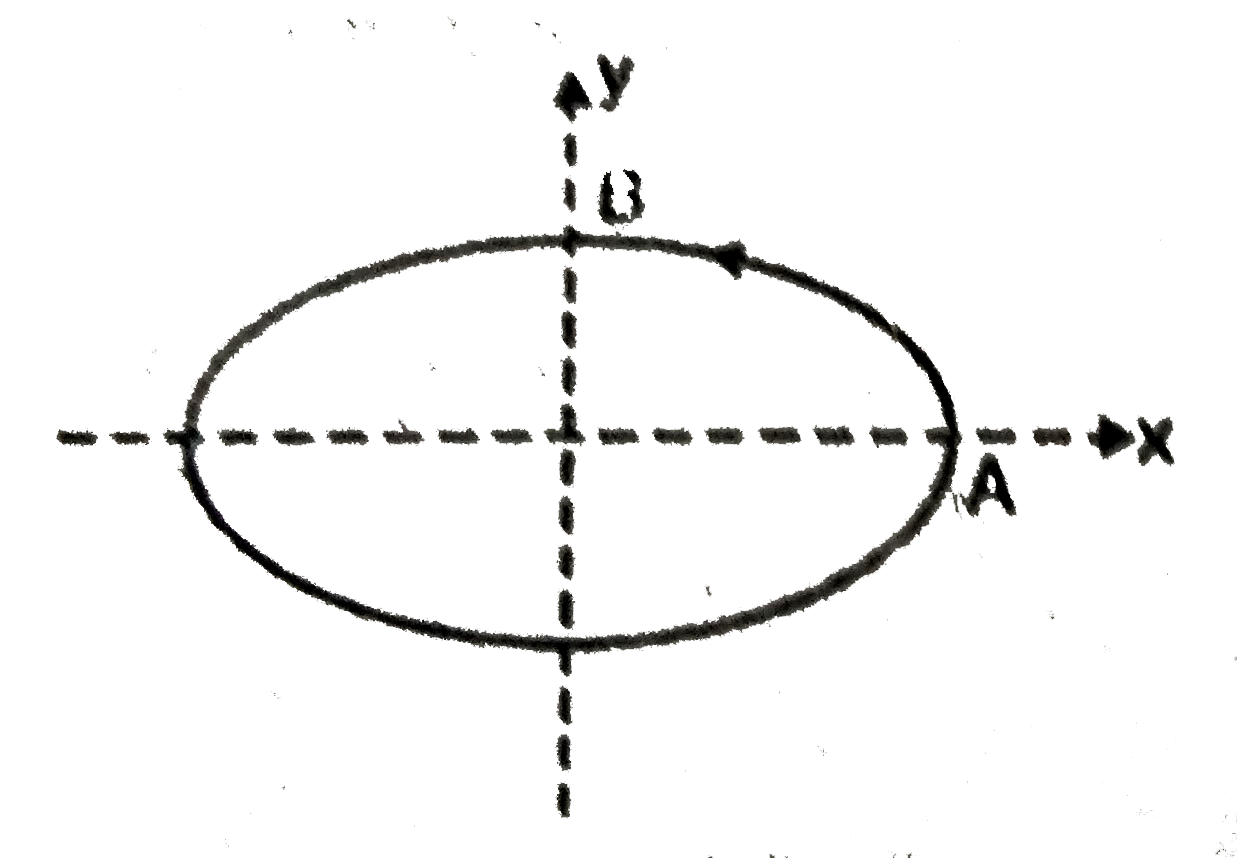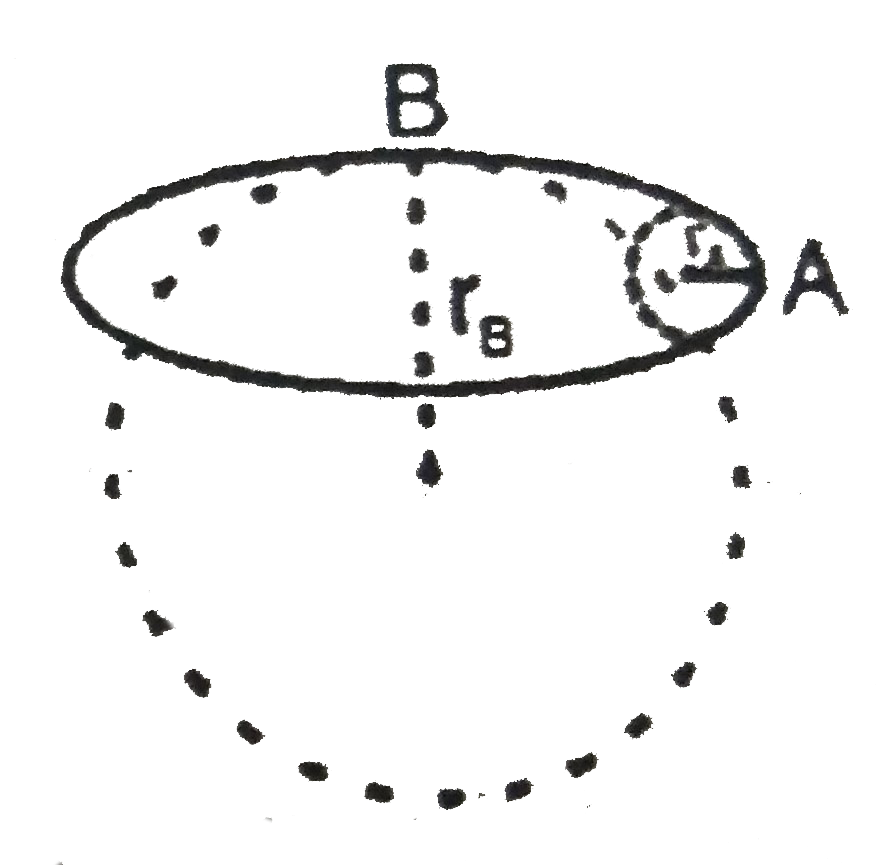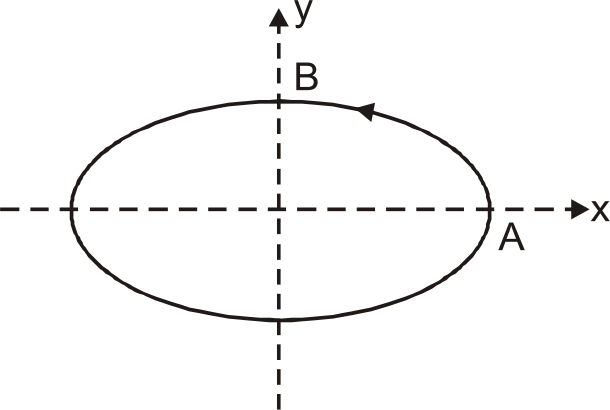A particle is moving along an elliptical path with a constant speed. As it moves from A to B, magnitude of its acceleration:

Continuously increases
continuoulsy decreases
remains constant
first increases and then decreases
The correct Answer is:B
a1=dvdt=0
ac=v2R
From A to B radius of curvature increases

so, acceleration decreases.
Topper's Solved these Questions
Similar Questions
A particle is moving along a circular path with a constant speed 10ms−1.What is the magnitude of the change in velocity of the particle ,when it moves through an angle of 60∘ around the center of the circle ?
View SolutionA particle moves in a circular path with constant speed . Its motion is
View Solution
Knowledge Check
- Question 1 - Select One
A particle is moving along an elliptical path with constant speed. As it moves from A to B, magnitude of its acceleration :
 AContinuously increasesBcontinuously decreasesCRemains constantDfirst increases and then decreases
AContinuously increasesBcontinuously decreasesCRemains constantDfirst increases and then decreases - Question 2 - Select One
A particle is moving in a circle with a constant speed. Its moving is
APeriodicBOscillatoryCSimple harmonicDboth 'a' and 'b' - Question 3 - Select One
If a particle is moving along a circular path with constant speed, then Its motion is
APeriodic and simple harmonicBNon periodicCPeriodic but not simple harmonicDNon periodic but simple harmonic
A particle moves on circular path of radius 5 m with constant speed 5 m/s. Find the magnitude of its average acceleration when it completes half revolution.
View SolutionA particle is moving on a circular path with constant speed, then its acceleration will be
View SolutionA particle is moving on a circular path with a constant speed 'v'. Its change of velocity as it moves from A to B is:
 View Solution
View SolutionFor a particle moving along a circular path with a constant speed, the accelerationis constant in
View SolutionA particle is moving along a circular path with a constant speed 30m/s. What is change in velociyt of a particle, when it describe and angle of 90∘ at the centre of the circle
View Solution

